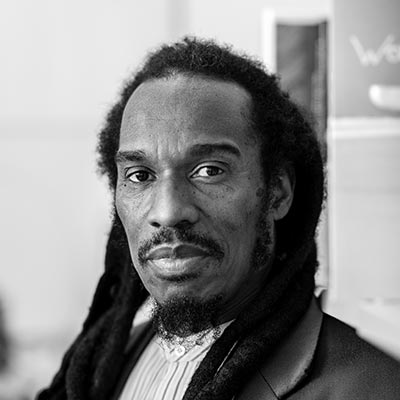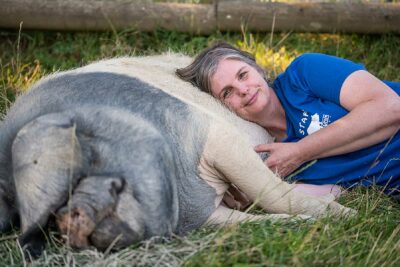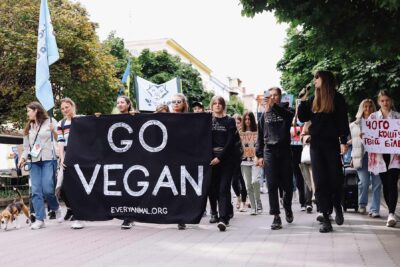There is a growing trend for farmers of animals to make a big change in their way of life and switch to growing plants instead. This is driven by two main concerns: the recognition of animal agriculture’s role in the climate crisis; and acknowledging their own ethical dilemma of sending animals they have cared for to be slaughtered. Here we meet eight farmers who have already made the change.
Jay and Katja Wilde, Beef Farmers
Jay’s father bought Bradley Nook dairy farm in 1956 and later converted it to farm cows for beef. Jay helped him run the farm and took over in 2011 when his father died. As a vegetarian, Jay had long found it difficult to send the cows to slaughter, and eventually he came to realize that he could no longer do it. With the support of the Vegan Society, the last herd of cows was spared the slaughterhouse. Some remained on the farm to be cared for by Jay and Katja, while the rest went to live out their lives at Hillside Animal Sanctuary. The farm itself is currently transitioning to a permaculture farm and vegan cooking school. Jay and Katja were the first UK farmers to make this ethical change, which led acclaimed filmmaker Alex Lockwood to create a BAFTA-winning short film about them. We highly recommend watching 73 Cows.
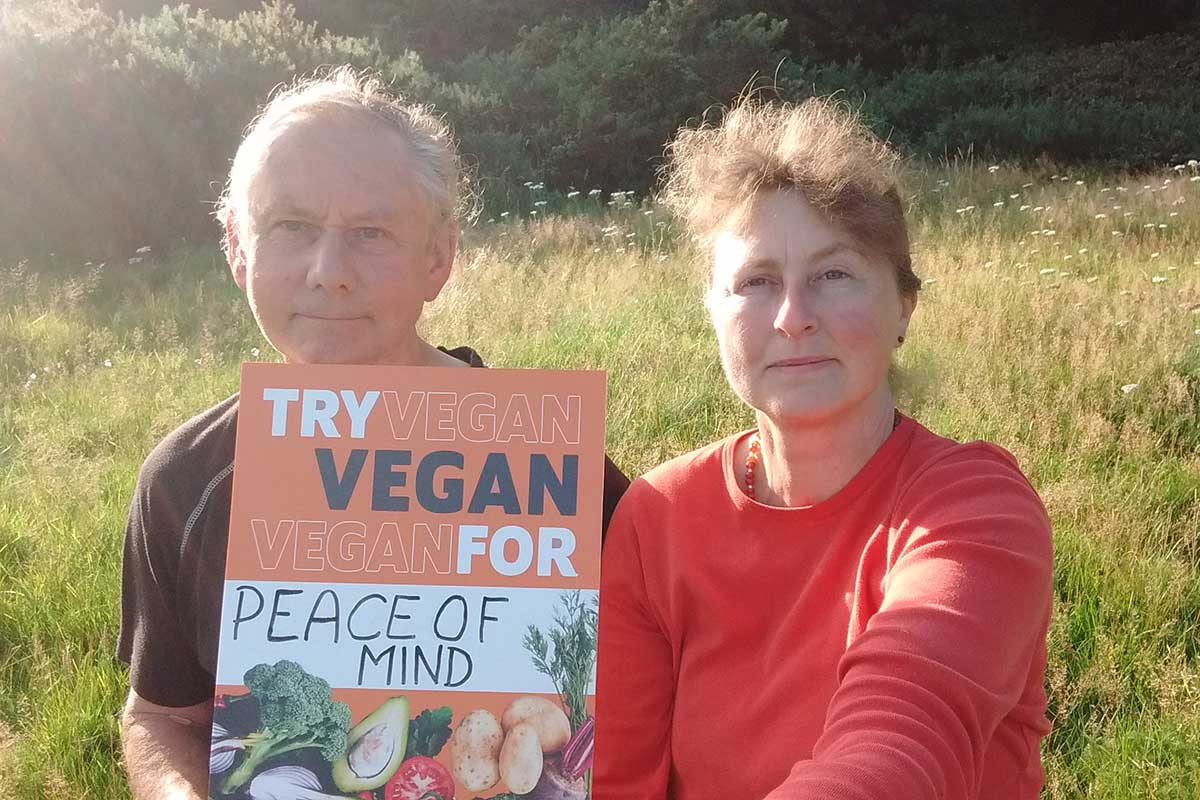
Laurence Candy, Beef and Dairy Farmer
Laurence Candy of Northwood Farm in Dorset, UK, experienced multiple life-changing events in a very short space of time. First, he lost almost the whole dairy herd to bovine tuberculosis, then followed serious family illnesses and the tragic death of his brother-in-law. With his own father ill in ITU, Laurence experienced an internal shift, and found for the first time that he was unable to send his cows to the slaughterhouse. Laurence had already begun the conversion to organic farming in recognition of the impact his operations were having on the local environment. Today, he has gone a big step further and is farming veganically — that is, with no animal inputs at all. The cows were saved and joined Jay and Katja’s at Hillside Animal Sanctuary. Meanwhile, Laurence continues to advocate for a shift in his industry, saying: “There’s no way of saying ‘business as usual’. It’s about telling the truth at the end of the day and facing the facts. We’ve got to get to net zero as soon as possible and that will mean a reduction in global livestock numbers.” Read more about Laurence’s transition, which was supported by Stockfree Farming.
Sivalingam Vasanthakumar, Goat and Sheep Farmer
Sivalingam Vasanthakumar grew up on a mixed vegetable and dairy farm on the outskirts of Colombo in Sri Lanka. He went on to study agriculture in India and later got his Masters degree in the UK. He found that western practices, such as separating calves from their mothers soon after birth, were deeply upsetting but, he reasoned, he didn’t have much choice. This was his job and he would just need to deal with it. After working on others’ farms, he rented his own land and started rearing goats for meat. Increasingly, he struggled to take the unwanted kids to slaughter. It felt like a betrayal. He switched to sheep farming but discovered he felt exactly the same way about the lambs. He eventually called Goodheart Animal Sanctuary and his remaining animals went to a happy forever home. Today, Sivalingam owns a smallholding that he is transforming into a nature-rich market garden that supplies the produce he needs for his vegan food business, Kumar’s Dosa Bar.
Thomas Reinhard and Fabienne Meier, Egg Farmers
Thomas and Fabienne had farmed 2,000 hens for their eggs for many years when the suffering of the birds finally got to them. Even though theirs was a small flock by industry standards Thomas and Fabienne could see that having this number of birds in one place meant they could not care for each and every animal. The birds suffered injuries and cannibalism, which is commonplace within the animal farming industry. Even without these welfare problems, the couple found it distressing to send the hens to slaughter when their egg productivity declined. Thomas said he felt liberated by ending this cycle and today, they are growing crops and fruit trees. Watch their story in this beautiful We Animals film.
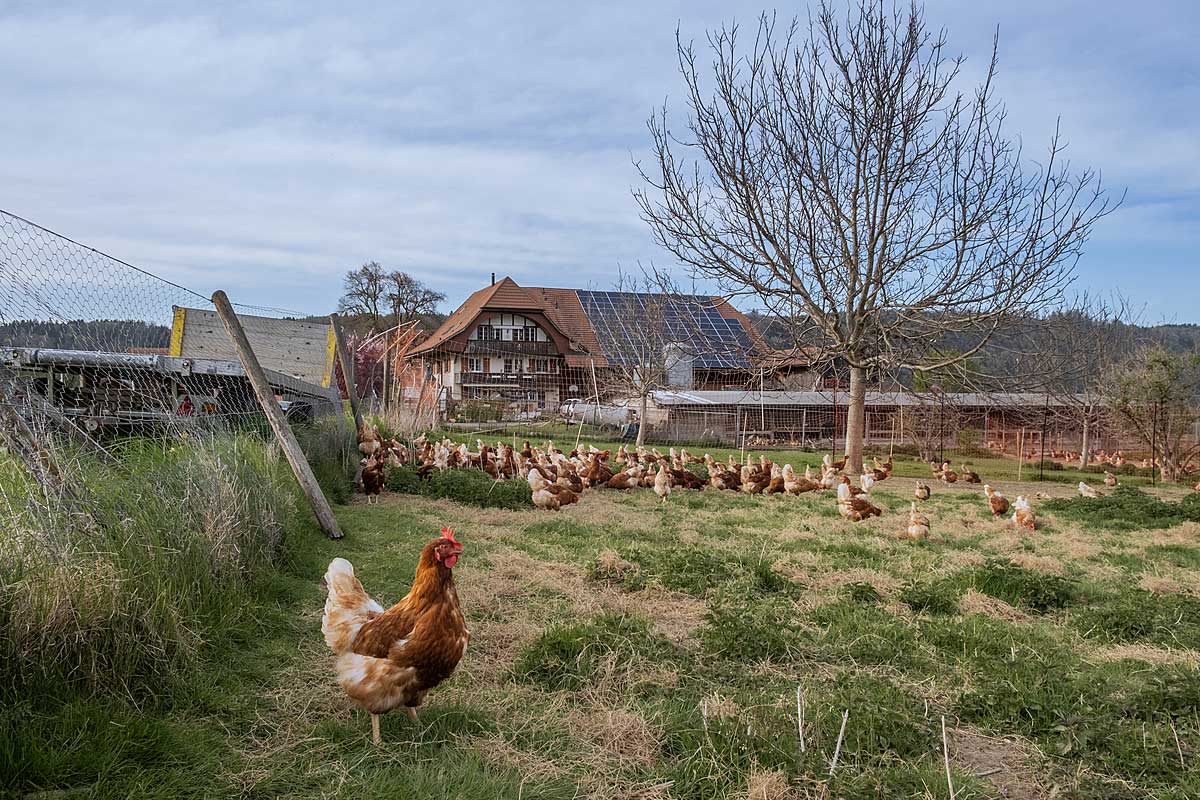
Mike Lanigan, Beef Farmer
A multigenerational cattle rancher in Ontario, Mike one day found himself working hard to keep a premature calf alive. And that’s when it all changed. “I had an epiphany,” he said. While he had never enjoyed sending animals to slaughter, he never thought there was a choice, but when faced with this tiny calf, the answer came through very clearly, and the change was immediate. Mike never sent his animals to slaughter again and instead became a sanctuary for them. The rest of his land has become productive, growing organic vegetables such as beets, cabbages, and radishes. You can meet the residents of Mike’s Farmhouse Garden Animal Home here, and even book a private tour if you are in the area.
Beat and Claudia Troxler, Dairy and Pig Farmers
Fourth-generation farmer Beat inherited his family’s farm in Switzerland and perhaps would have continued to run it as a traditional farm had he not met his future wife, Claudia. Their conversations about animals as sentient individuals allowed him to change his views, and they soon named their farm Aurelio Farm of Life, after the first calf born there who was not separated from his mother. Today, the farm is a sanctuary for 55 cows and many other animals. Beat and Claudia grow oats and make their own oat milk which is sold through their farm shop.
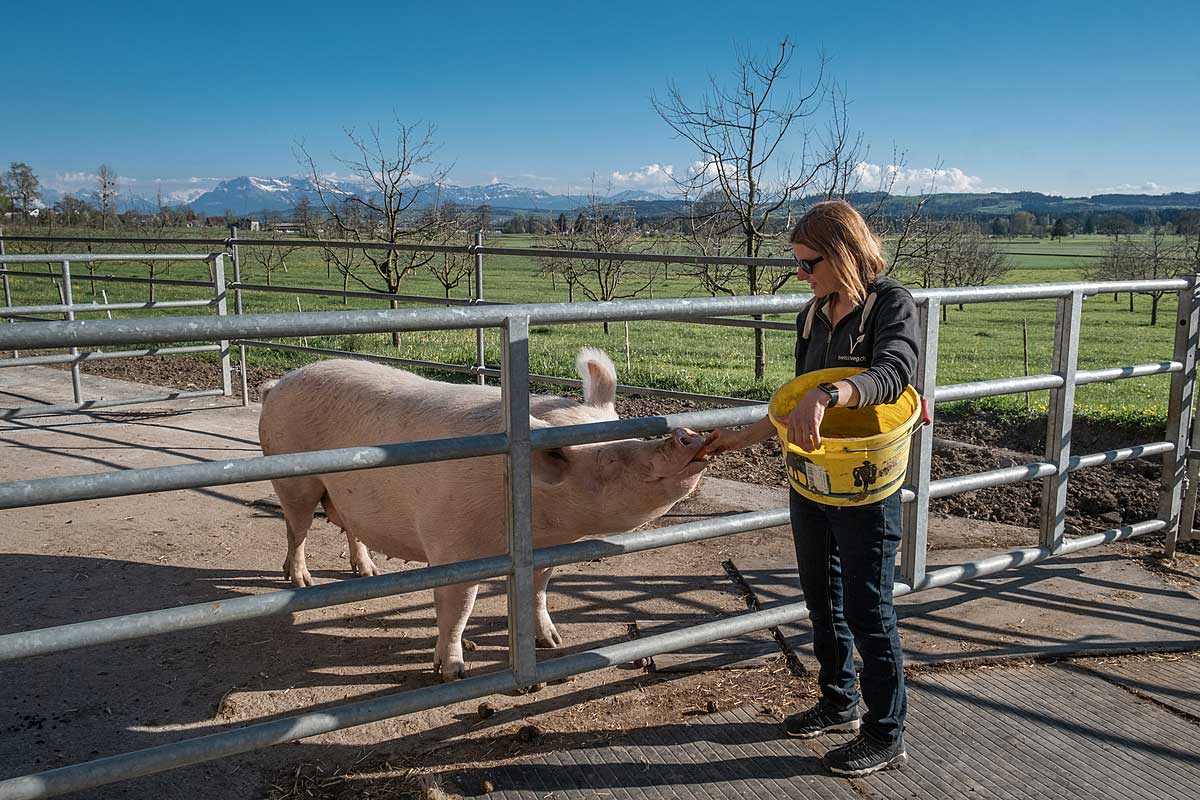
Davey and Hollie Schacherl, Beef Farmers
Davey is a 7th-generation Texan farmer and a vegan. It was inevitable that he and Hollie would want to change the ranch into a sustainable and ethical enterprise, and they managed to persuade Davey’s father to hold off selling the animals for slaughter until they had come up with a proposal. It was agreed that 26 cows would stay on the farm and live out their lives there. Meanwhile, other areas have been transitioned to permaculture farming. Alongside these ethical enterprises, the couple has established the farm as a location for weddings and other events. Says Hollie: “Just because things have been done this way, doesn’t mean we can’t change that cycle. If you know better and have the privilege to do it that way, wouldn’t you?”.
Selina and Adrian Blaser, Beef Farmers
Selina was a vegetarian who married a beef farmer. She thought she would be ok with this given the cows lived a good life on their pastures in Switzerland. But after just one year, she could not bear the animals being sent to slaughter, and the thought of losing one older cow in particular was breaking her heart. That cow had already birthed 13 calves, and was due to be sent to the slaughterhouse. Desperate to save her, Selina contacted Sarah Heiligtag at Transfarmation. Sarah agreed to save that cow, but in return told Selina that she would need to persuade her husband to make significant changes. Selina knew she did not want to earn money from something she did not agree with and the wheels were set in motion. Today, the farm is both a vegan sanctuary and a working farm, growing chickpeas that are made into hummus, as well as their own vegetables.
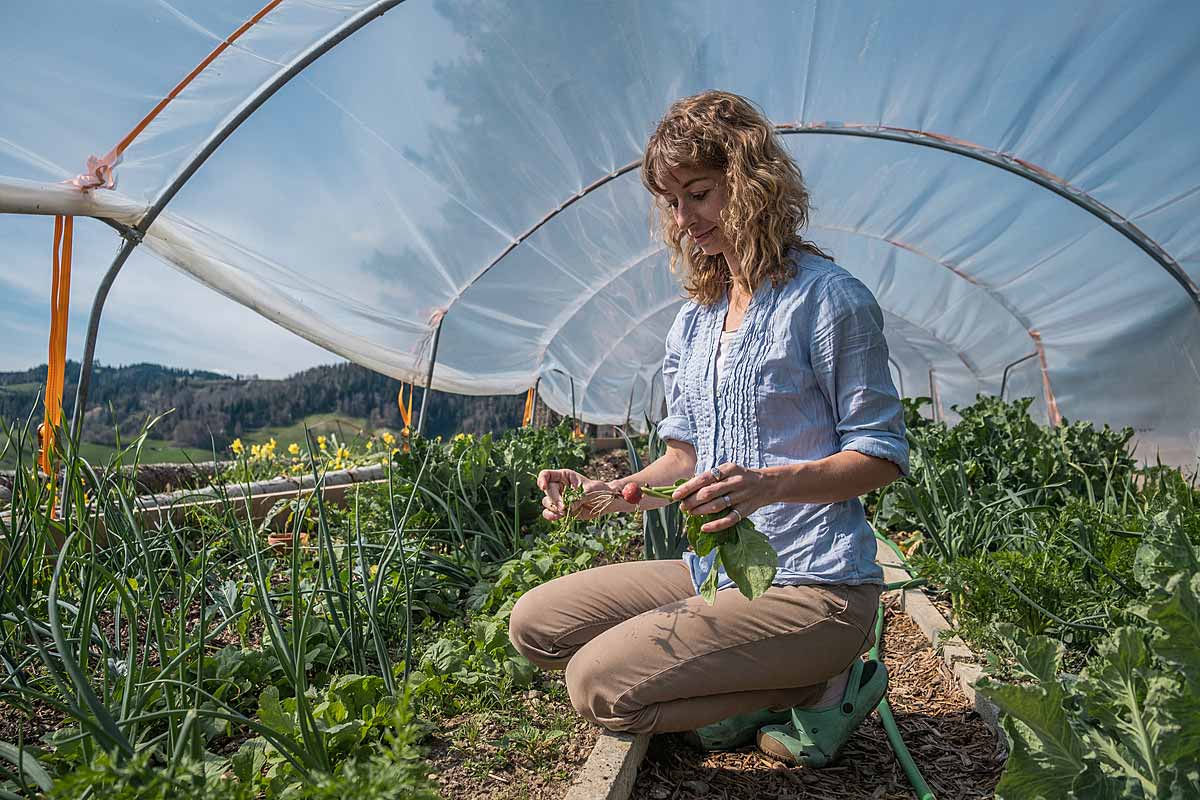
Helping Farmers Transform
There are hundreds of farmers who have now made the change, and several groups around the world dedicated to helping them do so. They include:
- Stockfree Farming, UK
- The Transfarmation Project, US
- The Rancher Advocacy Program, US
- Hof Narr Transfarmation, Switzerland, Germany, and Austria
- Farm Transitions Australia
Says Sarah Heiligtag of Hof Narr, who transformed her own farm into a vegan enterprise and sanctuary, then helped more than 100 other farms to make the change, too: “The whole process of ‘transfarmation’ is also a process of personal transformation. It’s like peace work for the people themselves. They get in line with their values.”


